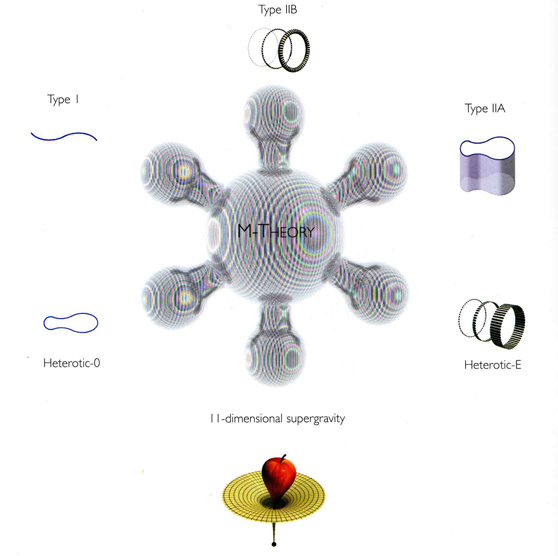What is string theory?
In string theory the fundamental objects are the 1-dimensional strings that sweep out a surface in spacetime, called worldsheet. The dynamics is described by the geometry of the worldsheet and the embedding in the so-called target space. In this picture particles are oscillation modes of the string and interactions occur by joining and splitting of string configurations. There are two different types of strings: the closed string and the open string with ends fixed on extended objects, called D-branes. The tension of the string is related to the string length scale which in turn needs to be related to the Planck scale, if string theory is to be a theory of quantum gravity.
The first formulation of string theory was the bosonic string theory, which describes a theory of bosons. The quantisation of the bosonic string leads to anomalies, that are related to so-called ghost fields, which describe states of negative norm. To get rid of these unphysical states 22 extra dimensions need to be introduced. Bosonic string theory thus only makes sense in 26 spacetime dimensions, where the ghost states have no interaction with physical states and can thus be ignored. The appearance of extra dimensions is not a problem for the theory since it can be formulated in such a way that these extra dimensions are folded such that only 4 spacetime dimensions are left visible for us to observe. This process is called compactification. The problem of bosonic string theory is that it is inconsistent: it predicts a state with imaginary mass, called the tachyon, that moves faster than the speed of light. In order to get rid of it and to include at the same time also fermions in the theory a special kind of symmetry, called supersymmetry, is required that relates bosons to fermions and predicts for each particle a corresponding supersymmetric partner. These superpartners could provide a mean to learn about the properties of string theory, if they would be detected in the Large Hadron Collider at CERN in the near future. Like for the the bosonic string the quantisation of the superstring leads to anomalies that cancel only in 10 spacetime dimensions. Because the superstring describes bosons and fermions and interactions between the particles it is a candidate for a unified theory of particles and interactions. There are different types of superstring theories, called type I, IIA, IIB, HE and HO, that are related by dualities and are expected to be limits of an underlying 11-dimensional theory, called M-theory. Further developments and extension to 12 dimensions lead to F-theory.

There is a web of relations, so-called dualities, that connect all five string theories as well as 11-dimensional supergravity. The dualities suggest that the different string theories are different realisations of an underlying fundamental theory, called M-theory.